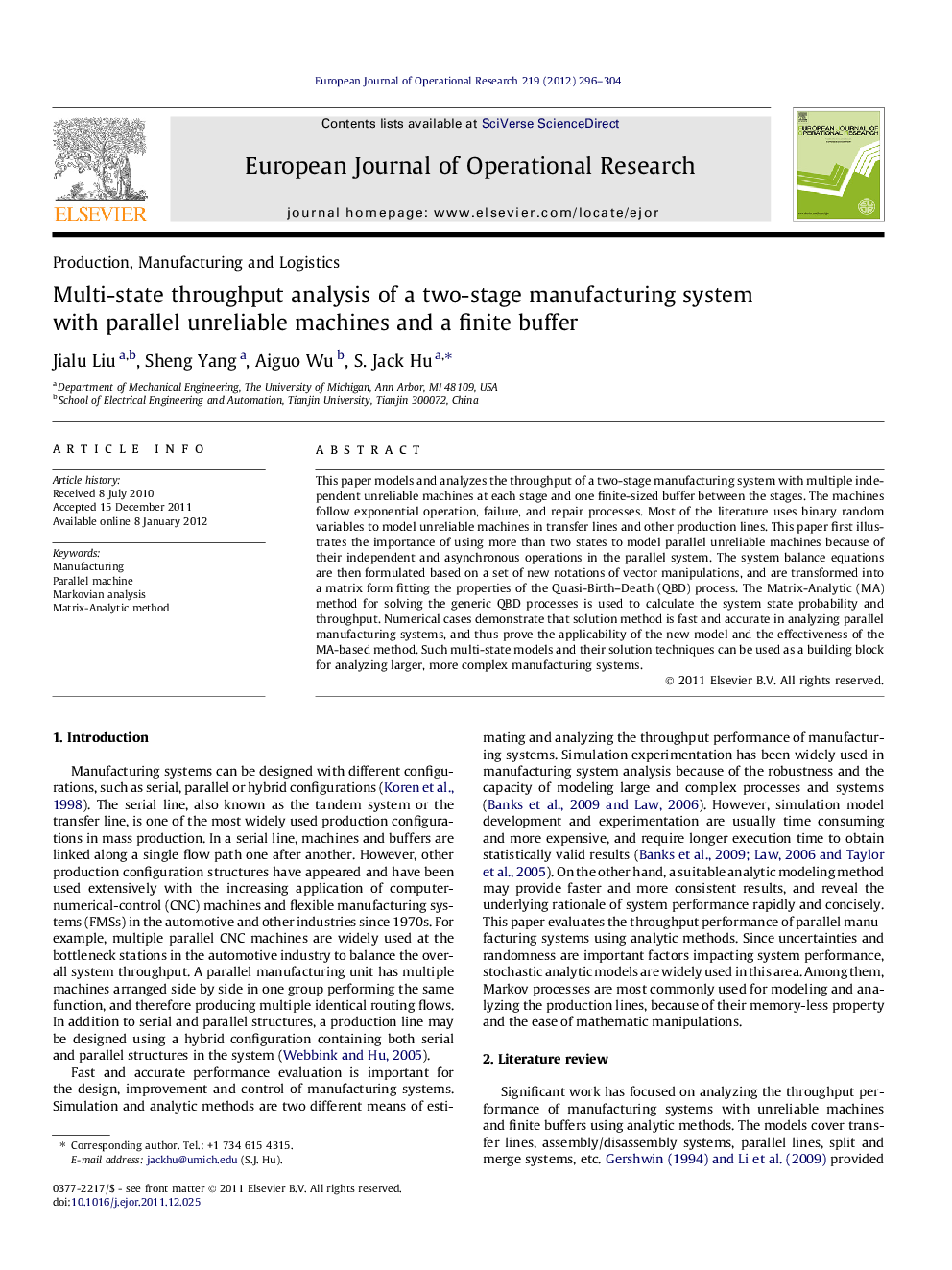| Article ID | Journal | Published Year | Pages | File Type |
|---|---|---|---|---|
| 480448 | European Journal of Operational Research | 2012 | 9 Pages |
This paper models and analyzes the throughput of a two-stage manufacturing system with multiple independent unreliable machines at each stage and one finite-sized buffer between the stages. The machines follow exponential operation, failure, and repair processes. Most of the literature uses binary random variables to model unreliable machines in transfer lines and other production lines. This paper first illustrates the importance of using more than two states to model parallel unreliable machines because of their independent and asynchronous operations in the parallel system. The system balance equations are then formulated based on a set of new notations of vector manipulations, and are transformed into a matrix form fitting the properties of the Quasi-Birth–Death (QBD) process. The Matrix-Analytic (MA) method for solving the generic QBD processes is used to calculate the system state probability and throughput. Numerical cases demonstrate that solution method is fast and accurate in analyzing parallel manufacturing systems, and thus prove the applicability of the new model and the effectiveness of the MA-based method. Such multi-state models and their solution techniques can be used as a building block for analyzing larger, more complex manufacturing systems.
► The machines at each stage are modeled with more than two states. ► The system balance equations are written in a matrix form following the Quasi-Birth–Death process. ► The Quasi-Birth–Death equation is then solved using the Matrix-Analytic (MA) method. ► The solution method is fast and accurate.
